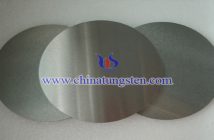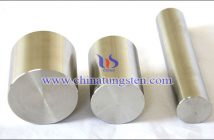The doped tungsten wire is the wire that dopes certain amount of potassium and silicon into pure tungsten powder. It will not only increase the color temperature, luminous efficiency and life time of wire, but also has well anti sag propery, it can be used as special lamp filament with high working temperature such as halogen lamp. Provided that some alloy elements such as cobalt are added into the doped wire, the wire will have high strength and shock resistance. The wire is generally used in lighting system in vibration environment, lamps for various vehicles (motorcycles, automobiles, trains, airplanes, etc) as well as special light bulbs for military purposes, heating wires for aeroengine, etc.
In addition to the electric light source, the wire is also used in other fields. The alloy wire is made by adding some alloy elements such as thorium, rhenium, cerium, yttrium, lanthanum and zirconium in pure tungsten powder or doped tungsten powder. It can be used as ammonia arc welding electrode, thermocouple, cathode wire of picture tube and lamp decoration of electron emission tube.
 Most wire production uses ammonium paratungstate (APT) as raw material. The general process is to calcine ammonium paratungstate into tungsten trioxide in air at about 500℃, or slightly reduce it to blue tungsten oxide in hydrogen at about 450℃. In order to produce incandescent lamp filament, a little potassium oxide, silicon oxide and alumina should be added into tungsten trioxide or blue tungsten oxide. The total quantity of the three kinds is no more than 1%. The doped tungsten oxide is reduced to tungsten metallic powder by hydrogen. The reduction process generally includes two steps: the first step is to reduce to tungsten dihydrogen (brown tungsten oxide) at about 630℃, and the second step is to reduce to metallic tungsten powder at 820℃. The purpose of the above mentioned reduction is to make the added potassium can fully work and control the particle size of the powder.
Most wire production uses ammonium paratungstate (APT) as raw material. The general process is to calcine ammonium paratungstate into tungsten trioxide in air at about 500℃, or slightly reduce it to blue tungsten oxide in hydrogen at about 450℃. In order to produce incandescent lamp filament, a little potassium oxide, silicon oxide and alumina should be added into tungsten trioxide or blue tungsten oxide. The total quantity of the three kinds is no more than 1%. The doped tungsten oxide is reduced to tungsten metallic powder by hydrogen. The reduction process generally includes two steps: the first step is to reduce to tungsten dihydrogen (brown tungsten oxide) at about 630℃, and the second step is to reduce to metallic tungsten powder at 820℃. The purpose of the above mentioned reduction is to make the added potassium can fully work and control the particle size of the powder.
 Then the doped tungsten powder obtained in this way will be pressed into slender square bars in a special mold. The square bars are electrified in hydrogen and sintered by way of self resistance heating at the temperature 3000℃. After sintering the density of tungsten bars will reach over 85% of the theoretical value. Then the tungsten bar can be made into tungsten rod with about diameter 3mm by rotary forging, after that the wire can be produced to that with various thickness by die drawing. For example, the diameter of the filament for 220V, 15W incandescent lamps is about 15µm, but that for 1000W tungsten bromide lamps is about 1.25mm. For the thinner diameter about 12ųm of the filament for 220V and 10W, it should be made by electrolytic corrosion.
Then the doped tungsten powder obtained in this way will be pressed into slender square bars in a special mold. The square bars are electrified in hydrogen and sintered by way of self resistance heating at the temperature 3000℃. After sintering the density of tungsten bars will reach over 85% of the theoretical value. Then the tungsten bar can be made into tungsten rod with about diameter 3mm by rotary forging, after that the wire can be produced to that with various thickness by die drawing. For example, the diameter of the filament for 220V, 15W incandescent lamps is about 15µm, but that for 1000W tungsten bromide lamps is about 1.25mm. For the thinner diameter about 12ųm of the filament for 220V and 10W, it should be made by electrolytic corrosion.



